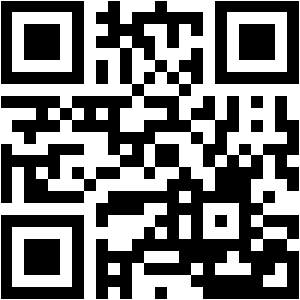| University | Eastern Institute Of Technology (EIT) |
| Subject | PGISE8.200 Information Sourcing and Evaluation |
Assessment topic
Assignment 2 – Analysing and synthesising information
Assessment type
Literature review
Length requirements
3500 words ± 10%
Submission details
Submission will only be accepted via EITOnline. Please check the Assignment Dropbox or Course Schedule for due date and time. Note that the Dropbox will check your assignment for breaches of academic integrity. Remember to include a cover page.
You may use AI tools in your assessment work but only as permitted by the assessment instructions. Any use of AI tools must be acknowledged and appropriately referenced. Each assessment will have two drop boxes, labeled ‘final draft’ and ‘final submission’. You must submit your assessment in both drop boxes and the content of your submissions should be the same. Your final draft must be your writing, completed without the use of grammar correction or any other writing assistance tool. Your final submission can include the use of grammar correction. Using AI tools in any way that is not explicitly permitted, or using AI tools without acknowledgement, is a breach of academic integrity. Please keep progressive drafts of your assessments so that you can demonstrate that the work you submit is your own. You can find the EIT academic policy here.
Stuck! Do not Know Assessment Answers?
Hire NZ Native Experts 24/7.
Weighting
65%
Course learning outcomes covered
LO2: Analyse and synthesise reviewed scholarly information in a written report
LO3: Apply scholarly, legal and ethical principles when accessing and using information sources
Resources for this assessment
Library databases
Background to this assessment
This is the second assessment for Information Sourcing and Evaluation. For this assessment you will return to the scenario that you developed for assignment one, but this time you will review the relevant literature on the adoption of your selected technology and make a recommendation about whether your selected company should adopt the technology.
Task 1
Instructions: Write a literature review using the resources selected in assessment 1, and make a recommendation about whether your organisation should adopt the selected technology (2750 words):
- Specify and justify three criteria that you will use to evaluate your selected technology
- Evaluate the selected technology against each of these criteria by analysing and synthesising information from your selected resources
- Provide a clear recommendation about whether the technology should be adopted
- Include a list of references in APA 7 style using Endnote
- Upload a copy of your Endnote library to the Endnote library dropbox
- Upload PDF copies of any text based resources to the sources dropbox
Guidelines:
- Evaluation criteria should be logically related to the rationale for adoption described in your scenario; these criteria could include cost, feasibility, and effectiveness.
- You can use the resources you selected for assessment 1, or you can select new resources, but your resources should still cover the same categories
- Your report should include the following: title page; executive summary; table of contents; introduction section; section for discussion of evaluative criteria, three sections for applying each evaluative criteria; conclusions section; recommendations section; and a list of references.
- The purpose of this task is to demonstrate your ability to use information resources effectively, so you should address each evaluative criteria by drawing on the relevant information from your selected resources
Task 2
Instructions: Write a discussion of how funding might have biased your selected resources (750 words):
- Select three of your resources and for each resource briefly describe how production was funded, and other incentives that might have contributed to production, how publication was funded, and how your access was funded
- Discuss how these economic considerations might create bias and impact the credibility of each resource
Guidelines:
- You can include this task as an appendix at the end of your report
- Try to select three resources that were funded in different ways or which illustrate different types of potential bias
- In many cases you will not be able to find definitive answers about funding but you should investigate the publishing venue (journal, magazine, website, etc) and draw reasonable conclusions
- The purpose of this task is to demonstrate that you understand the variety of ways in which creation, publication, and access can be funded, and how these different types of funding can create bias
Be sure to consider the performance criteria on the marking rubric for this assessment.
Buy Custom Assignment & Homework Solutions
Pay to NZ Native Writers | Cheap Cost & Plag Free
Get the best college assignment help NZ services from the academic experts of New Zealand AssignmentHelp and score high grades. Our team of academic writers online offers great support, such as essay help, thesis help online, report writing help, etc.
- LAWS390 Business Law for Māori Organisations Essay | VUW New Zealand
- Nursing Assignment 3 : Factors that Impact Registered Nurses’ Ability to Influence National Government Health Policy
- The Management and Behaviour or Pregnant Sows on Pasture Assignment 1 | Massey University (MU)
- HAS 962 Occupational Hygiene: Measurement Assessment 4 AIOH Technical Report | UOW
- IT00143 Install & Optimize Software Applications Assignment | Pacific Polytech
- Digital Tourism and Hospitality Assignment Report | Auckland University of Technology
- HEAL840 Critical Enquiry for Evidence Based Practice Additional Assessment Opportunity (AAO) Semester 1 2025
- RES903 Research Dissertation Assessment One | Nelson Marlborough Institute of Technology (NMIT)
- 71338 Managing Change Assessment 3 Strategy and Implementation Report | Open Polytechnic
- BSRV4601 Fundamentals Real Estate Assignment 1: Eligibility and licensing | Open Polytechnic (OP)


